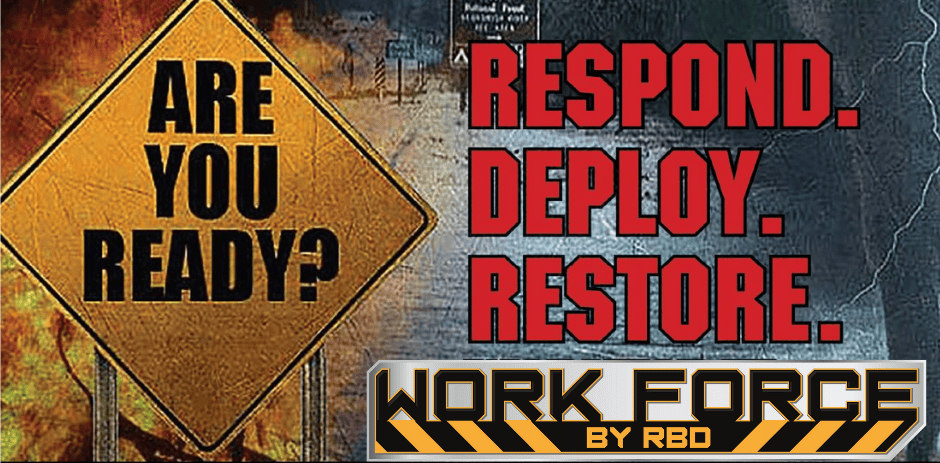January 20 2025
Disasters & Disaster Recoveries:
How mobile commands and bunkhouses play a role in recovery
Over the last six months, the United States has experienced several significant life events. In that time period, we’ve experienced a presidential election and two natural disasters: a flood in the southeast which has devastated places like North Carolina, Georgia, and Tennessee and recently the devastating fires raging in southern California. The presidential elections are consequential but not life altering as disasters.
Each of us can play an integral part in these events. For the purpose of this blog, we’ll focus on the natural disasters. For those directly affected, there are sources to help them through the other end of these. We at Recreation by Design stand at the ready, building mobile command and bunkhouse trailers to help the government agencies and their disaster partners with solutions, restoring humanity. 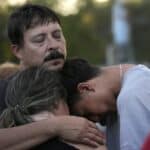
These mobile units are deployed in a wide range of scenarios, from natural disasters like hurricanes, wildfires, and floods to large-scale events such as industrial accidents and pandemics. Their versatility and functionality make them indispensable assets in modern recovery operations while at same time offers recovery teams to stay onsite.
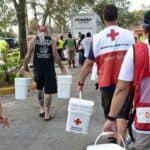 First and foremost, mobile command trailers provide a centralized hub for coordination and communication. In the aftermath of a disaster, effective communication is critical to ensuring a swift and efficient response. In the aftermath of a disaster such as the aforementioned ones, effective communication is critical to ensuring a swift and efficient response. Mobile command trailers are equipped with advanced technology, such as satellite communications, radios, internet connectivity, and video conferencing capabilities. These features enable first responders, government agencies, and other stakeholders, including organizations like the Red Cross, FEMA, local sheriff’s departments, and the National Guard, to stay connected and exchange real-time information, regardless of the surrounding conditions. For instance, during a hurricane, traditional communication infrastructure may be damaged or destroyed, making mobile command trailers a reliable alternative for maintaining contact with local, state, and federal agencies. By serving as a command center, these trailers streamline decision-making processes, improve situational awareness, and enhance the overall efficiency of recovery efforts.
First and foremost, mobile command trailers provide a centralized hub for coordination and communication. In the aftermath of a disaster, effective communication is critical to ensuring a swift and efficient response. In the aftermath of a disaster such as the aforementioned ones, effective communication is critical to ensuring a swift and efficient response. Mobile command trailers are equipped with advanced technology, such as satellite communications, radios, internet connectivity, and video conferencing capabilities. These features enable first responders, government agencies, and other stakeholders, including organizations like the Red Cross, FEMA, local sheriff’s departments, and the National Guard, to stay connected and exchange real-time information, regardless of the surrounding conditions. For instance, during a hurricane, traditional communication infrastructure may be damaged or destroyed, making mobile command trailers a reliable alternative for maintaining contact with local, state, and federal agencies. By serving as a command center, these trailers streamline decision-making processes, improve situational awareness, and enhance the overall efficiency of recovery efforts.

In addition to their communication capabilities, mobile command trailers offer a physical space for planning and strategizing. They are designed to accommodate multiple personnel, including emergency managers, law enforcement officials, medical teams, and logistics coordinators. The trailers are often equipped with workstations, conference areas, and display screens to facilitate collaborative decision-making. This centralized workspace allows teams to analyze data, develop action plans, and coordinate resources effectively. For example, during a wildfire, a mobile command trailer can serve as a base of operations for firefighters, enabling them to map out containment strategies and allocate personnel and equipment where they are needed most. The involvement of organizations such as the National Guard, Federal Government and local sheriff’s departments further enhances the effectiveness of these operations by providing additional manpower and specialized expertise.
Another critical function of mobile command trailers is their role in providing situational awareness. Many mobile command units are often equipped with tools such as drones, GPS tracking systems, and weather monitoring equipment. These technologies enable responders to gather and analyze real-time data, providing a comprehensive picture of the situation on the ground. This information is crucial for identifying hazards, assessing damage, and prioritizing recovery efforts. For example, during a flood, drones launched from a mobile command trailer can survey affected areas, identify stranded individuals, and monitor rising water levels. This data-driven approach ensures that resources are deployed efficiently and that recovery operations are targeted where they are needed most.
While mobile command trailers focus on coordination and communication, bunkhouses address the equally important need for shelter and rest. Disasters often displace both victims and responders, creating an urgent need for temporary accommodation. Bunkhouses are designed to provide safe and comfortable sleeping quarters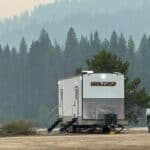
for emergency personnel and displaced individuals. These units are equipped with beds, climate control, restrooms, and basic amenities, offering a much-needed respite in challenging circumstances. For example, during a wildfire, firefighters working long shifts require adequate rest to maintain their physical and mental well-being. Bunkhouses provide a convenient and accessible solution, allowing responders to stay close to the action while ensuring they are well-rested and ready to perform their duties.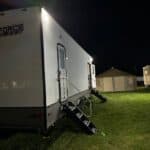
Bunkhouses also play a crucial role in maintaining the morale and resilience of emergency teams. Disasters can be physically and emotionally draining and having a dedicated space for rest and recovery can significantly impact the well-being of responders. In addition to sleeping quarters, some bunkhouses are equipped with recreational spaces, kitchens, and laundry facilities, creating a sense of normalcy amidst the chaos. This supportive environment helps reduce stress, prevent burnout, and enhance the overall effectiveness of recovery efforts. They also assist in reducing fatigue (and perhaps accidents or worse) as many workers may have to drive a couple hours to a nearby hotel after working 14+ hour days. From a financial aspect, having bunkhouses in basecamp can save customers thousands to hundreds of thousands of dollars in hotel accommodations, quickly providing an advantageous cost/benefit analysis and payback.
Furthermore, in the aftermath of a natural disaster, these units can provide temporary housing for displaced families, offering them a safe and secure space while longer-term solutions are implemented. The flexibility and adaptability of bunkhouses make them an asset in a wide range of recovery contexts.
The integration of mobile command trailers, bunkhouses, and resources from organizations such as the Red Cross, FEMA, local sheriff’s departments, and the National Guard into recovery efforts demonstrates the importance of a holistic approach to disaster response. While mobile command trailers focus on coordination and communication, bunkhouses address the human element by providing shelter and support. Together, these units form a comprehensive solution that addresses both operational and humanitarian needs. For example, during a hurricane recovery operation, a mobile command trailer can serve as the central hub for coordinating rescue missions, while nearby bunkhouses provide shelter for both responders and evacuees. The involvement of additional organizations ensures that all aspects of recovery are addressed, from strategic planning to the well-being of individuals on the ground.
In addition to their practical benefits, mobile command trailers and bunkhouses contribute to the overall resilience of communities. By enabling rapid response and recovery, these units help minimize the long-term impacts of disasters and support the restoration of normalcy. For instance, during a large-scale industrial accident, mobile command trailers can facilitate the coordination of cleanup efforts, while bunkhouses provide shelter for workers and affected residents. This dual functionality ensures that recovery efforts are both efficient and compassionate, fostering a sense of hope and stability in affected communities.
The deployment of mobile command trailers, bunkhouses, and the resources of organizations like the Red Cross and FEMA also underscores the importance of preparedness and investment in disaster response infrastructure. As climate change continues to increase the frequency and intensity of natural disasters, the demand for these mobile units is likely to grow. Governments, organizations, and communities must prioritize the procurement and maintenance of these assets to ensure they are ready for deployment when needed. Additionally, ongoing training and collaboration among stakeholders are essential to maximize the effectiveness of these units in real-world scenarios.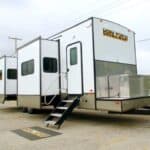
Finally, mobile command trailers and bunkhouses play a vital role in recovery efforts by providing essential tools for coordination, communication, shelter, and support. Their versatility, functionality, and adaptability make them indispensable assets in disaster response operations. By addressing both operational and humanitarian needs and leveraging resources from organizations like the Red Cross, FEMA, local sheriff’s departments, and the National Guard, these mobile units contribute to the overall resilience of communities and support the swift restoration of normalcy in the aftermath of disasters. Another outlet that flies under the radar is Mercury One, a 501(c) (3) foundation founded by Media personality and best selling author Glenn Beck. As the challenges posed by emergencies and disasters continue to evolve, the importance of mobile command trailers and bunkhouses in recovery efforts cannot be overstated.
If you, your family, or someone you know has been affected by any disasters, here are some links to websites will help you navigate these uncertain times. Let’s all do what we can to restore lives; restore humanity.
https://www.fema.gov/disaster/4856
https://www.disasterassistance.gov/
https://www.redcross.org/about-us/our-work/disaster-relief.html
https://mercuryone.org/disaster-relief/
From your friends at RBD



